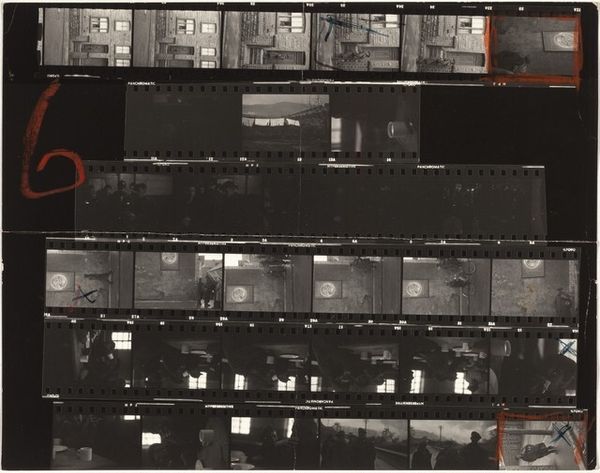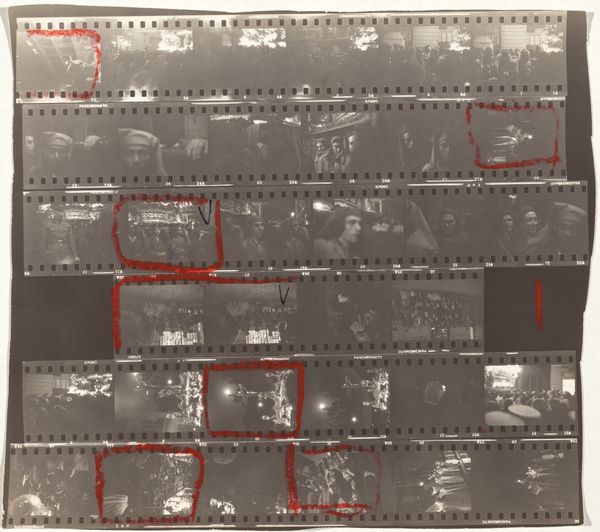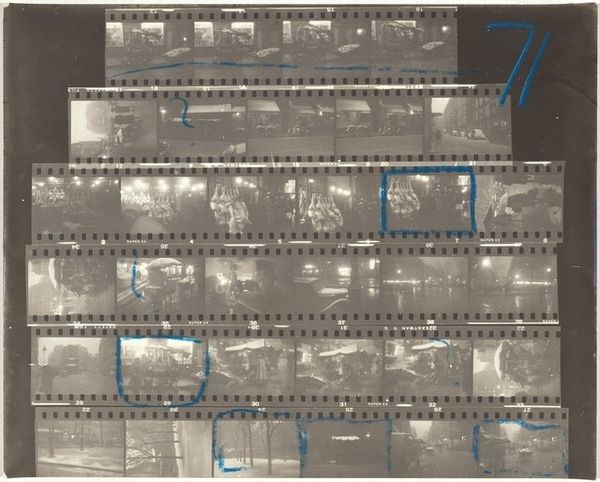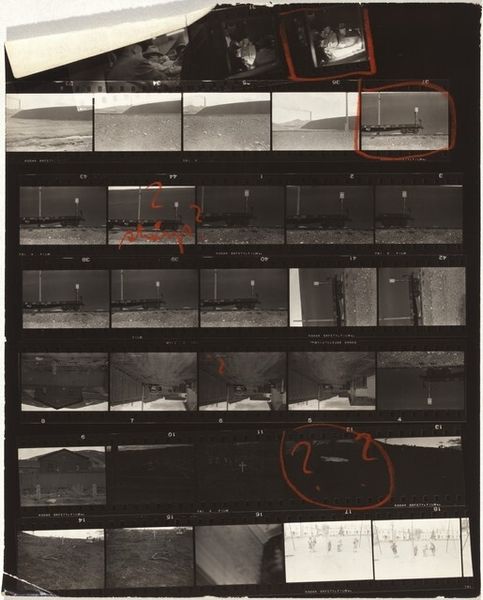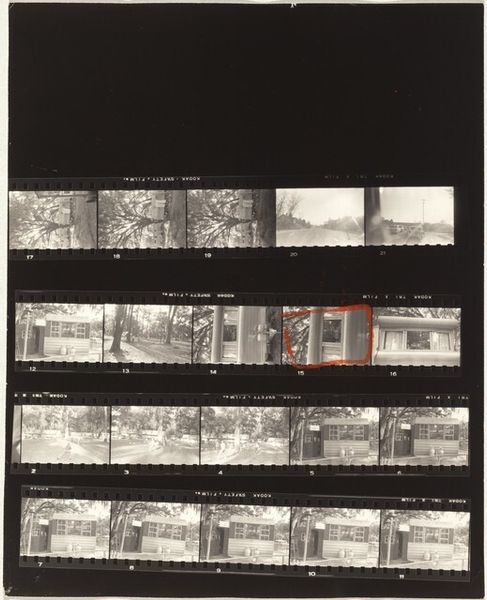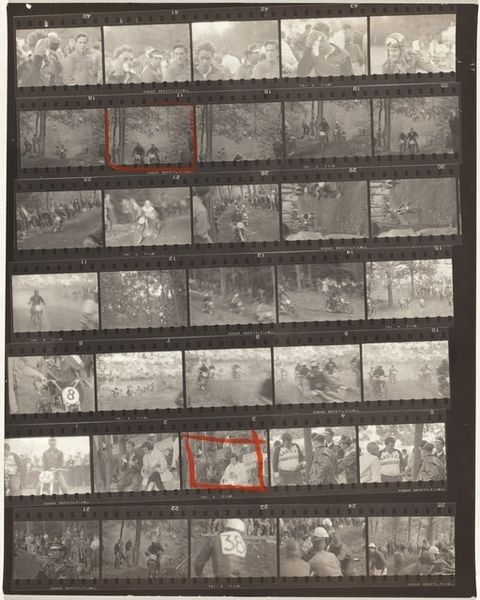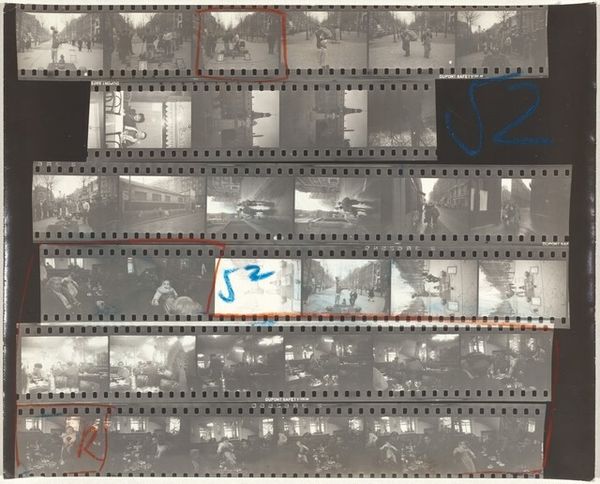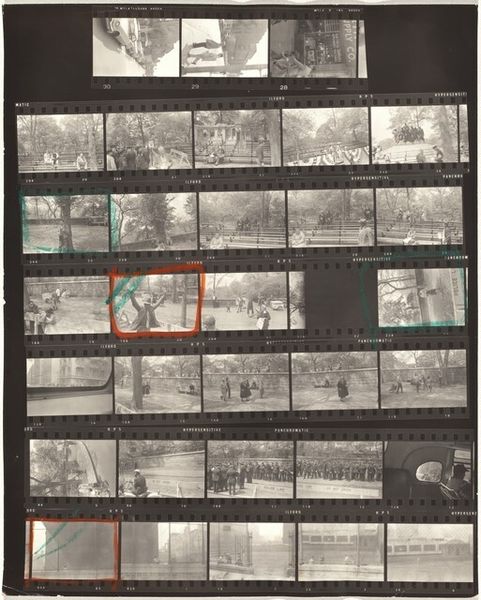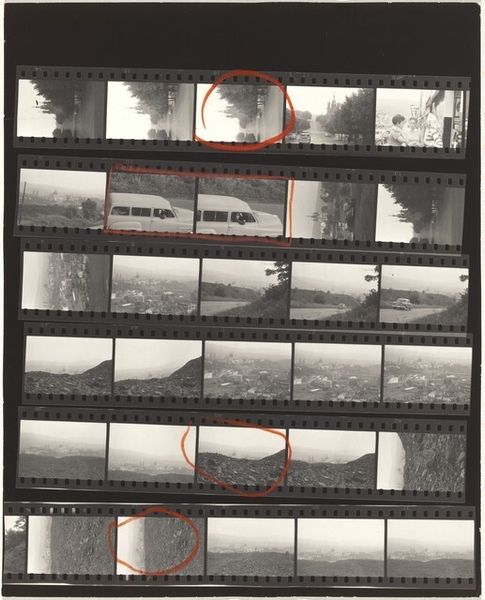
#
excavation photography
#
surveyor photography
#
architectural and planning render
#
architectural modelling rendering
#
architectural plan
#
autocad drawing
#
architecture model
#
architectural section drawing
#
architectural drawing
#
architecture drawing
Dimensions: overall: 20.3 x 25.8 cm (8 x 10 3/16 in.)
Copyright: National Gallery of Art: CC0 1.0
Editor: This is "Wales 2," a photographic contact sheet by Robert Frank, made in 1953. It feels like a glimpse behind the scenes, seeing the artist's process, rather than a finished work. I am intrigued by these selections that Frank himself has marked. What significance do you think the contact sheet itself has as a piece of art, given its candid and preparatory nature? Curator: That's a perceptive reading. As a historian, I see the contact sheet as deeply embedded in the shift in photographic practice occurring in the mid-20th century. Consider the social context: after WWII, there's a growing desire for authenticity and a move away from staged or overly constructed imagery. This sheet exposes not just the *what* but also *how* Frank captured Wales. The annotations reveal a dialogue, or struggle, that we might see in this image. Editor: That's a great point! Is it then a commentary on the selection process, or a kind of deconstruction of the 'decisive moment' promoted by photographers like Cartier-Bresson? Curator: Precisely. Frank, though heavily influenced by Cartier-Bresson, began to reject this philosophy of photographic purism by laying bare how even ostensibly documentary photographs are mediated through an artist’s choices. Why Wales, though? What kind of statement could Frank make about Great Britain through photographing working class people walking through rural landscapes? What kind of political context does that imagery conjure? Editor: Now that I think of it, maybe that’s a commentary on labour and class relations at the time? The marked frames do seem to feature prominent figures in some way. This really does add layers of depth that wouldn’t be apparent if viewing a single, ‘perfected’ photograph. Curator: Exactly. And thinking about the way this art would then enter public collections, exhibited in galleries - how might that recontextualise that original political sentiment? Editor: I’ve learned so much today, seeing beyond the single image to consider the cultural moment and the art market framing its display. Curator: Me too. Considering an artist’s intentions can challenge assumptions around objectivity and art’s supposed transparency.
Comments
No comments
Be the first to comment and join the conversation on the ultimate creative platform.
